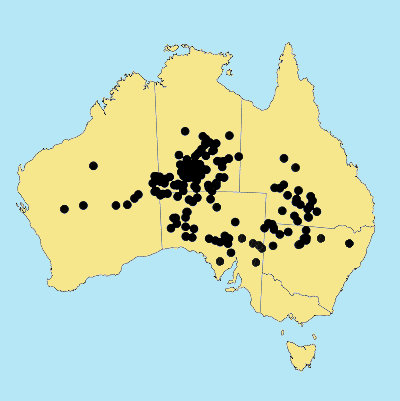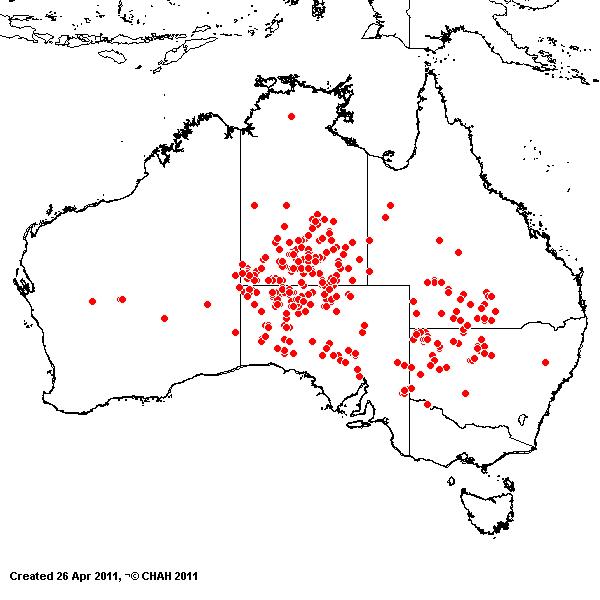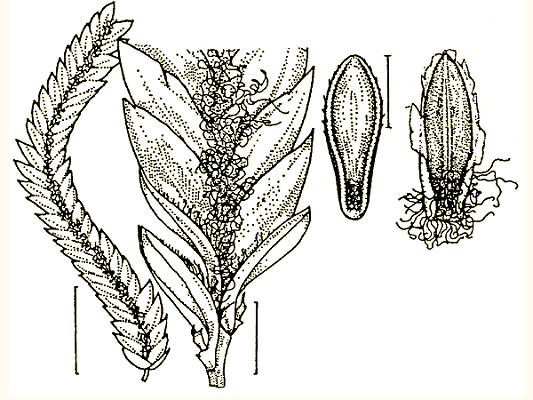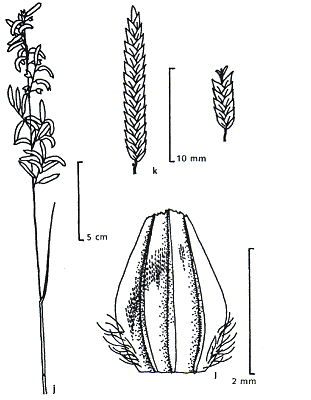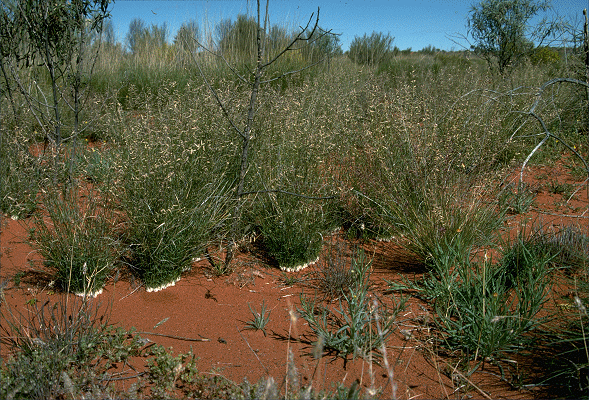Eragrostis laniflora Benth. Fl.Austral.7:648(1878).
Classification.
(GPWG 2001) : Subfamily Chloridoideae. Cynodonteae.
Type of Basionym or
Protologue Information: ST: Mrs. Forde s.n., Australia: New South Wales:
Darling River
ST: Andrews s.n.,
Australia: Central
Australia: Lake Eyre
ST: Giles s.n.,
Australia: Central
Australia: Charlotte Waters and towards West Australia.
Key references
(books and floras): [1878] G.Bentham, Flora Australiensis 7 (648),
[1981] M.Lazarides in J.Jessop (ed)., Flora of Central Australia (457),
[2002] D.Sharp & B.K.Simon, AusGrass, Grasses of Australia, [2006]
J.Jessop, G.R.M.Dashorst, F.M.James, Grasses of South Australia (374),
[2008] S.W.L.Jacobs, R.D.B.Walley & D.J.B.Wheeler, Grasses of New South
Wales (253).
Illustrations:
[2005] K.Mallet (ed.), Flora of Australia 44B: Poaceae 3
(Fig. 71A-D), [2006] J.Jessop, G.R.M.Dashorst, F.M.James, Grasses of South
Australia (374, fig. 305), [2008]
S.W.L.Jacobs, R.D.B.Whalley & D.J.B.Wheeler, Grasses of New South Wales,
4th edn (253).
Habit.
Perennial. Rhizomes present, elongated. Culms erect, 21–75 cm tall, wiry.
Lateral branches simple. Ligule a fringe of hairs, 0.7 mm long. Leaf-blades
straight, flat or involute or convolute, 5–10 cm long, 1–3 mm wide.
Inflorescence.
Inflorescence compound, a panicle. Panicle linear or lanceolate, 8–20 cm long.
Spikelets.
Spikelets sessile. Fertile spikelets many flowered, with at least 2 fertile
florets (9–62), comprising 9–62 fertile floret(s), with diminished florets at the
apex, linear or elliptic or oblong, laterally compressed, 6–37 mm long.
Glumes. Glumes
similar. Lower glume ovate, membranous, keeled, 1-keeled, 3 -nerved. Upper
glume ovate, membranous, keeled, 1-keeled, 3 -nerved.
Florets.
Fertile lemma 2–3 mm long, keeled, 3 -nerved. Lemma apex muticous. Lodicules
present. Anthers 3.
Continental
Distribution: Australasia.
Australian
Distribution: Western Australia, Northern Territory, South Australia,
Queensland, New South Wales.
Western Australia: Giles. Northern Territory: Central Australia North, Central Australia South. South Australia:
North-western, Lake Eyre, Nullabor, Gairdner-Torrens Basin, Flinders Ranges,
Eastern, Eyre Peninsula, Murray. Queensland:
Burke, Gregory North, Gregory South, Mitchell, Warrego, Maranoa. New South Wales:
North-Western Slopes, North-Western Plains, North Far Western Plains.
Notes.
A useful fodder species in native pastures.
Distinguishing characters include hairy
spikelets; woolly base; deciduous closely imbricate florets; granular or
scaberulous lemmas; turgid 3–4-angled caryopsis; deciduous (lower caducous)
usually scaberluous, 1–2-nerved glumes.
Endemic;
distribution is scattered around Wiluna, W.A. and in the Great Victoria and
Gibson Deserts, then is more widespread in central N.T., S.A. and from about
Winton in Qld S to near Cobar, N.S.W. In deep, red and red-brown sandy loams;
on plains, levees, low hills and ridges, sandhills, dunes and interdunes; in
association with limestone and quartzite.; flowers all year round.; fruits all
year round.
